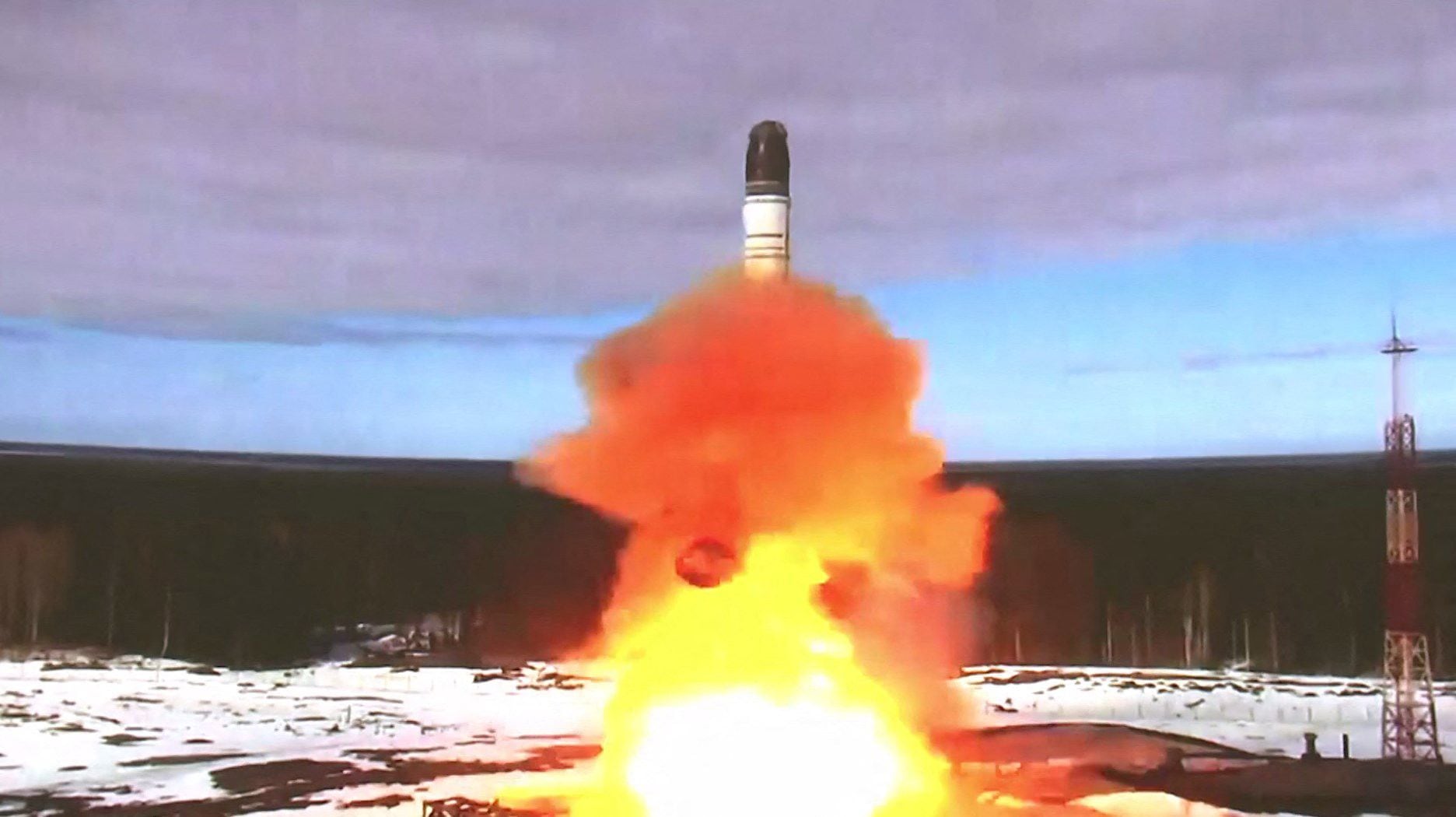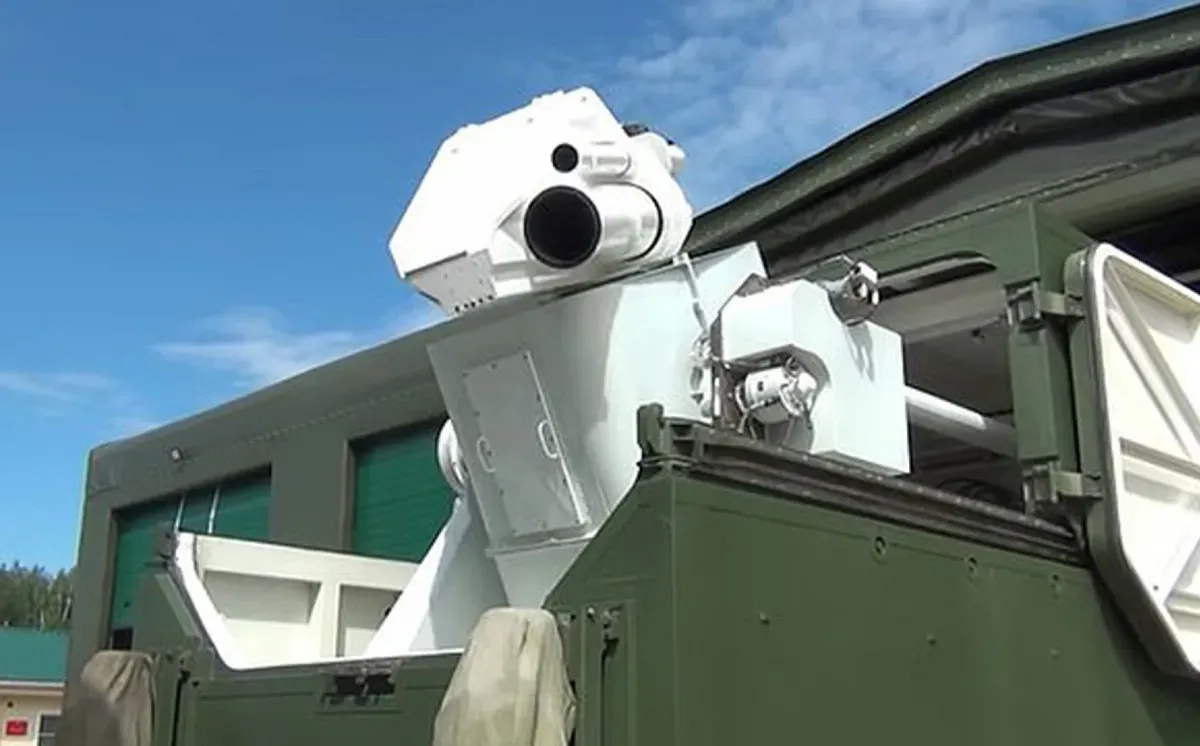The Bulava maritime intercontinental ballistic missile, which has a range of 9,000 kilometers and can carry up to 10 nuclear warheads, is already in service with the United States Armed Forces. Russiacountry that is considered the power of the Second World War after the United States.
Russia said on Sunday that it had successfully conducted a test launch of the Bulava From a nuclear submarine fourth generation.
LOOK: What does the billion-dollar weapons package that the United States will deliver to Israel contain?
“The new Strategic nuclear submarine Emperor Alexander III successfully fired intercontinental ballistic missile Bulava in the White Sea”, in northern Russia, the Ministry of Defense reported is a statement.
The missile hit its target, located at a testing range on the peninsula of Kamchatkain the Russian Far East, “at the appointed time”, he added.
The launch takes place shortly after Russia revoke its ratification of the Comprehensive Nuclear Test Ban Treaty (CTBT, its acronym in English).
TASS news agency quoted the missile’s chief designer, Yuri Solomonovwho stated that his insertion into the Armed Forces occurred through a decree dated May 7, the same day the president Vladimir Putin began his fifth six-year term in Russia.
The Moscow Institute of Thermotechnics developed the Bulava since 1998. In total, according to the Meduza portal, 40 test launches were carried out with this missile, seven of which were declared unsuccessful.
According to the EFE agency, test failures forced series production of the vehicle to be delayed for years. Bulavawhich significantly increased spending, since the development of these missiles represented a large part of Russia’s weapons budget.

He Bulava intercontinental ballistic missile It is 12 meters long and has a range of 9,000 kilometers, which makes it capable of hitting distant targets such as U.Sand any European city.
According to its designer, Yuri Solomonov, The Bulava could even surpass the United States’ anti-missile shield.
O Bulava (SS-NX-30, according to NATO classification) They are launched from state-of-the-art nuclear submarines (Projects Borei).
The Zona Militar portal reported that the Borei and Borei-A (called Project 955 and 955A) are nuclear-powered ballistic submarines designed and built to integrate the deterrent force of the Russian Federation. They displace around 14,720 tons on the surface and are called upon to replace the aging Delta III, IV and Typhoon submarines built in the Soviet era.
The Russian Navy has seven submarines capable of carrying up to 16 rockets Bulava each one.
Furthermore, this missile can be equipped with ten nuclear warheads.
He Bulava It is based on the long-range intercontinental ballistic missile (ICBM) design called Topol-M (SS-27), but is lighter and more sophisticated.

put on He said in 2008, when it was in the testing phase, that this missile was capable of penetrating any anti-missile system existing at that time and in the future.
According to Sputnik News, Bulava missile uses solid fuel, allowing it to achieve a ballistic trajectory much more quickly than its predecessors. This also prevents it from being shot down in the initial phase of the flight.
In 2021, Rear Admiral Arkady Navarsky, then chief of staff of the Submarine Forces Command of the Russian Pacific Fleet, explained to Sputnik News why he considers ballistic missiles practically invincible. Bulava.
According to the military, this is because They are easy to maintain and capable of maneuvering in the boost phase, which makes them “invulnerable to any anti-missile defense system”.

O Avangard are hypersonic missilesThey are capable of changing course and altitude at very high speeds, which makes them “practically invincible”.
They were successfully tested in December 2018. Their speed reached Mach 27, or 27 times the speed of sound, and hit a target located about 6,000 km away, according to the Ministry of Defense of Russia cited by the AFP agency. A year later they were put into service.

O Kinzhal hypersonic missiles They were used for the first time in March 2022, at the beginning of the Russian invasion of Ukraine.
O Kinzhal (dagger in Russian) and then destroyed an underground weapons warehouse in the west Ukraine.
This weapon can bypass air defense systems, according to Moscow. During testing, they hit all their targets at a distance of between 1,000 and 2,000 kilometers. They were put on warplanes MiG-31.

He Sarmat It is a heavy fifth-generation intercontinental ballistic missile capable of evading anti-missile defenses.
With a range of more than 18 thousand kilometers, the missile weighs more than 200 tons and “has virtually no limits in terms of scope”, according to Russia.
He Sarmataccording to Putin, it is capable of “defeating all anti-aircraft systems” and “will make those who try to threaten” Russia think twice.
Putin said it even works for “targets that pass through both the North and South Pole”.

Technical characteristics of combat laser systems Peresvet (very clear in Russian) are classified as secret, according to AFP. They have been combat-ready since December 2019, according to the Russian Ministry of Defense.
He Poseidon is a nuclear-powered underwater drone which is capable of traveling more than a kilometer deep, at a speed of 60 to 70 knots, being invisible to detection systems, according to a source from the Russian military-industrial complex, cited by the official TASS agency.
Its first tests were carried out in the spring of 2020 on the submarine Belgorod, indicated AFP. Putin claims its “unlimited reach”.

Also of “unlimited scope”, according to Russia, the Burevestnik It is capable of overcoming almost all interception systems.
The technical characteristics of the nuclear-powered Burevestnik (stormbird in Russian) cruise missiles are classified as secret.

The first official release of Zircon hypersonic missile Date of October 2020. It flies at Mach 9 to hit sea and land targets, says the AFP.
At the end of December 2021, put on announced a successful first test shot of a salvo of zircon. Other tests were carried out in the Russian Arctic, notably with the Admiral Gorshkov frigate and a submarine.
Source: Elcomercio
I am Jack Morton and I work in 24 News Recorder. I mostly cover world news and I have also authored 24 news recorder. I find this work highly interesting and it allows me to keep up with current events happening around the world.

:quality(75)/cloudfront-us-east-1.images.arcpublishing.com/elcomercio/W7N3JRF54NBQTM6FQEQTPZDJBE.jpg)





